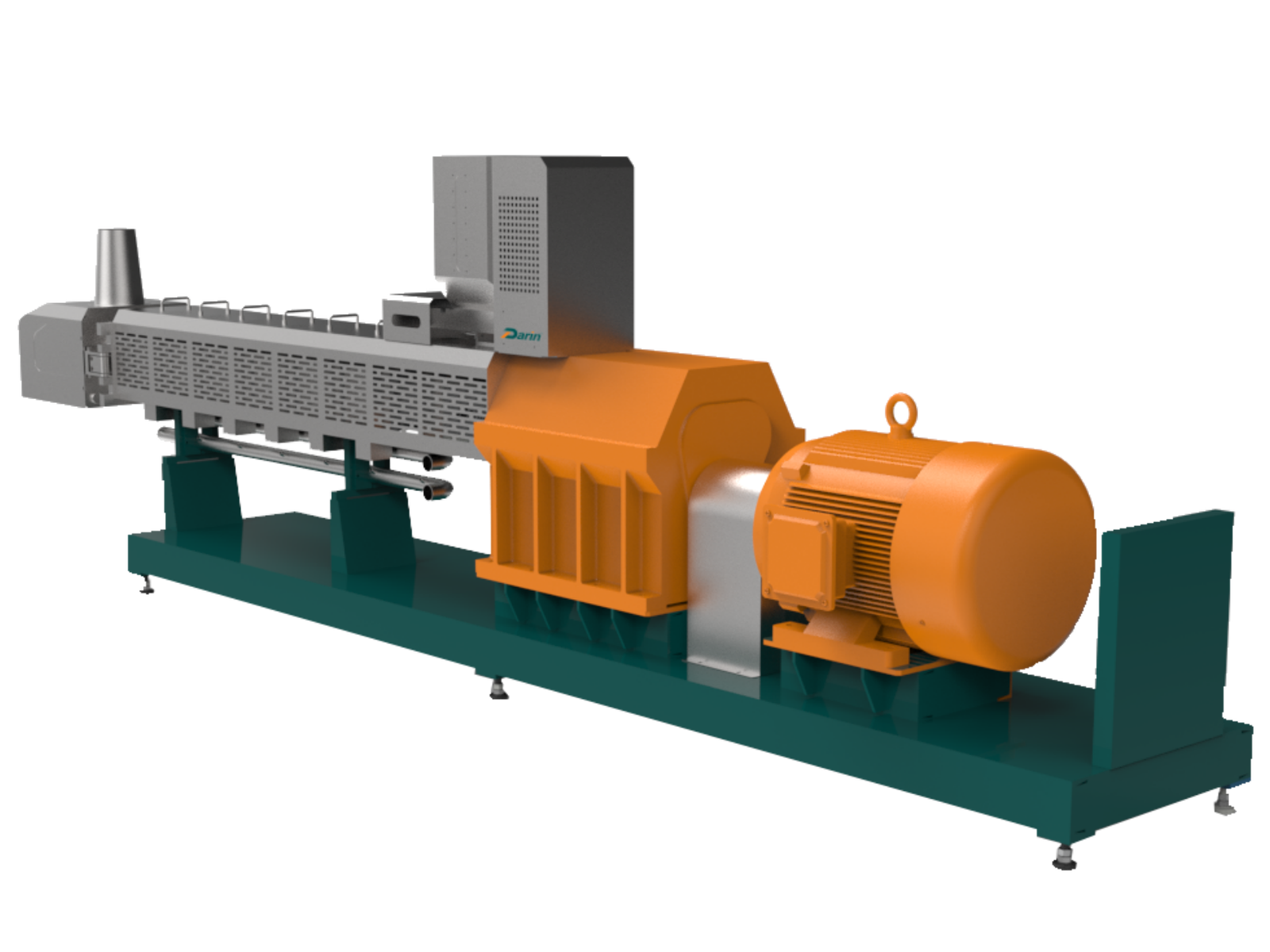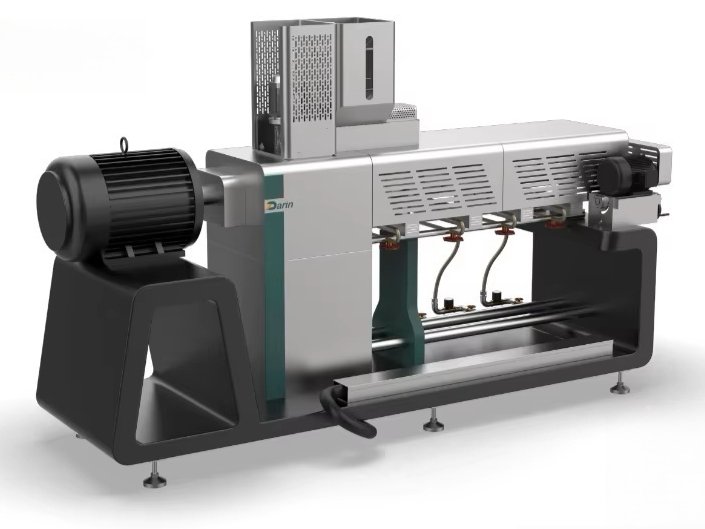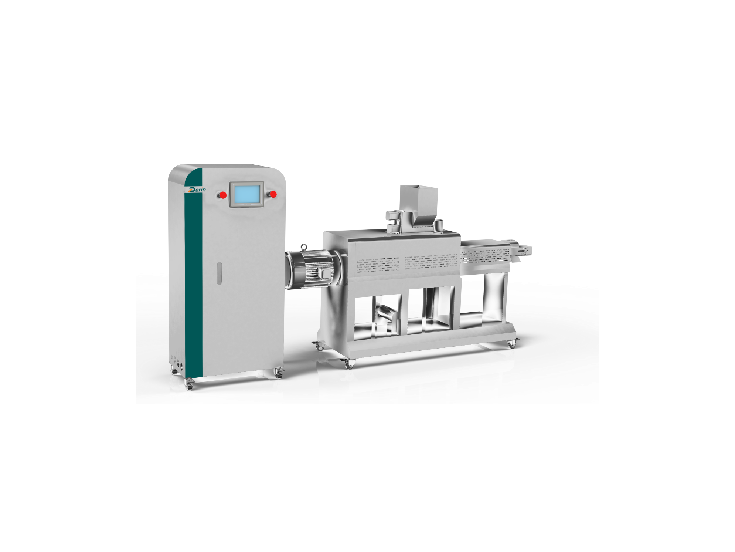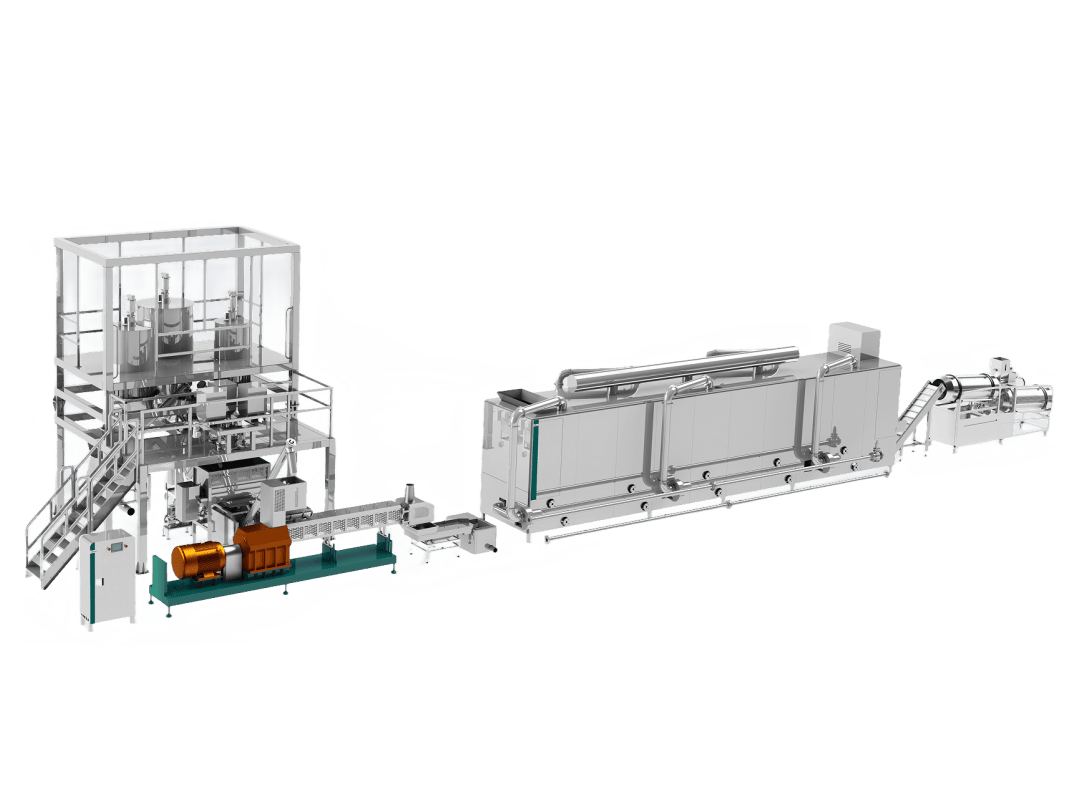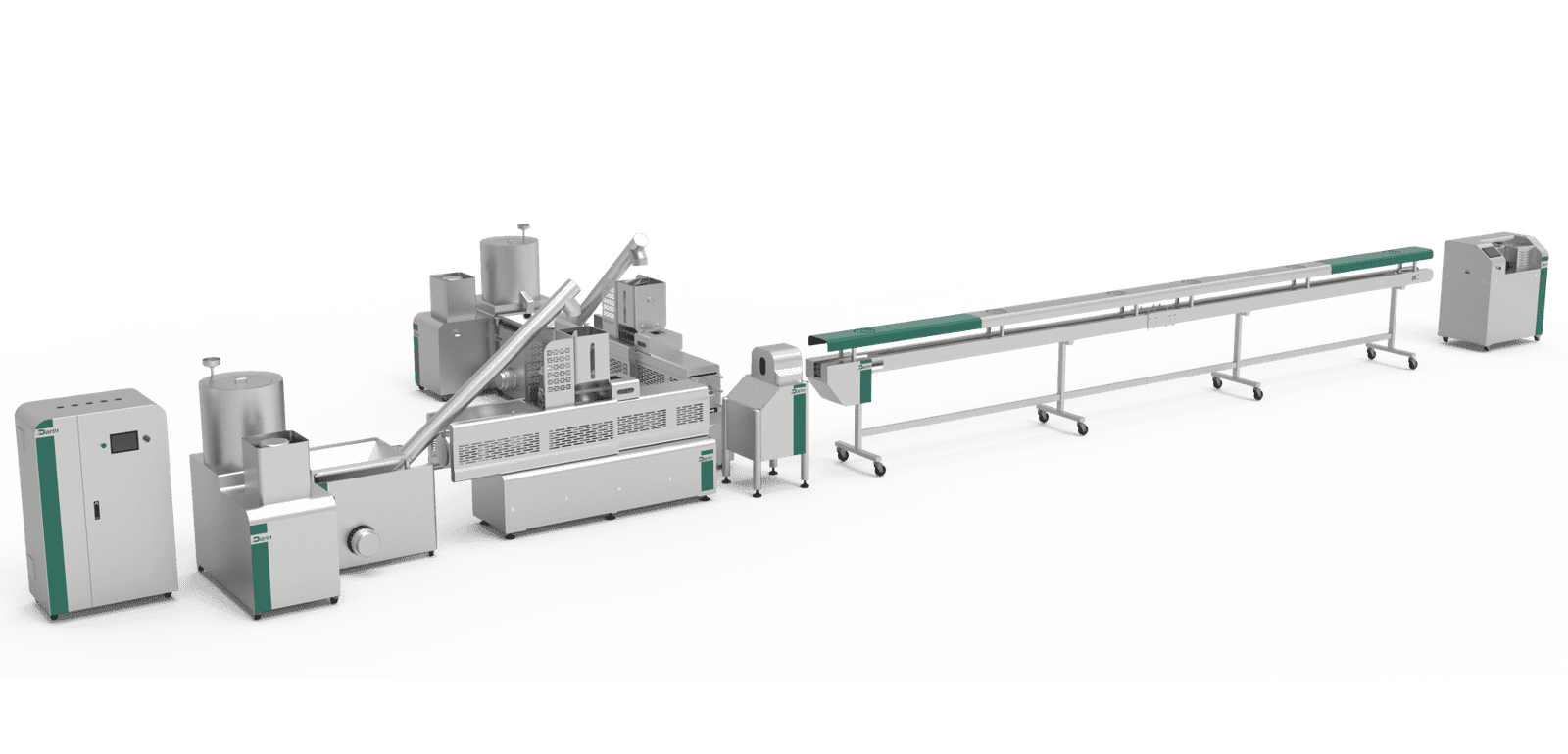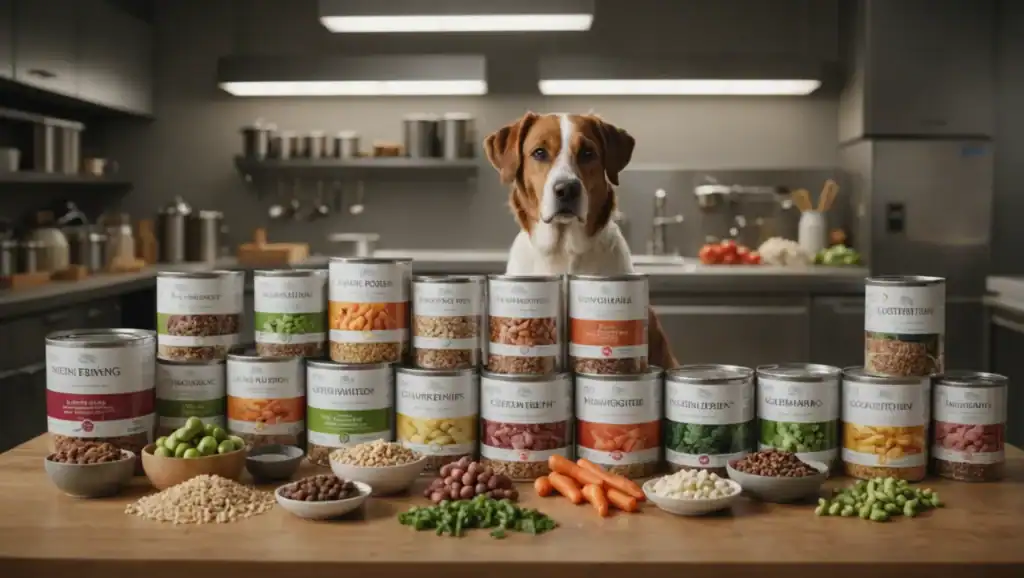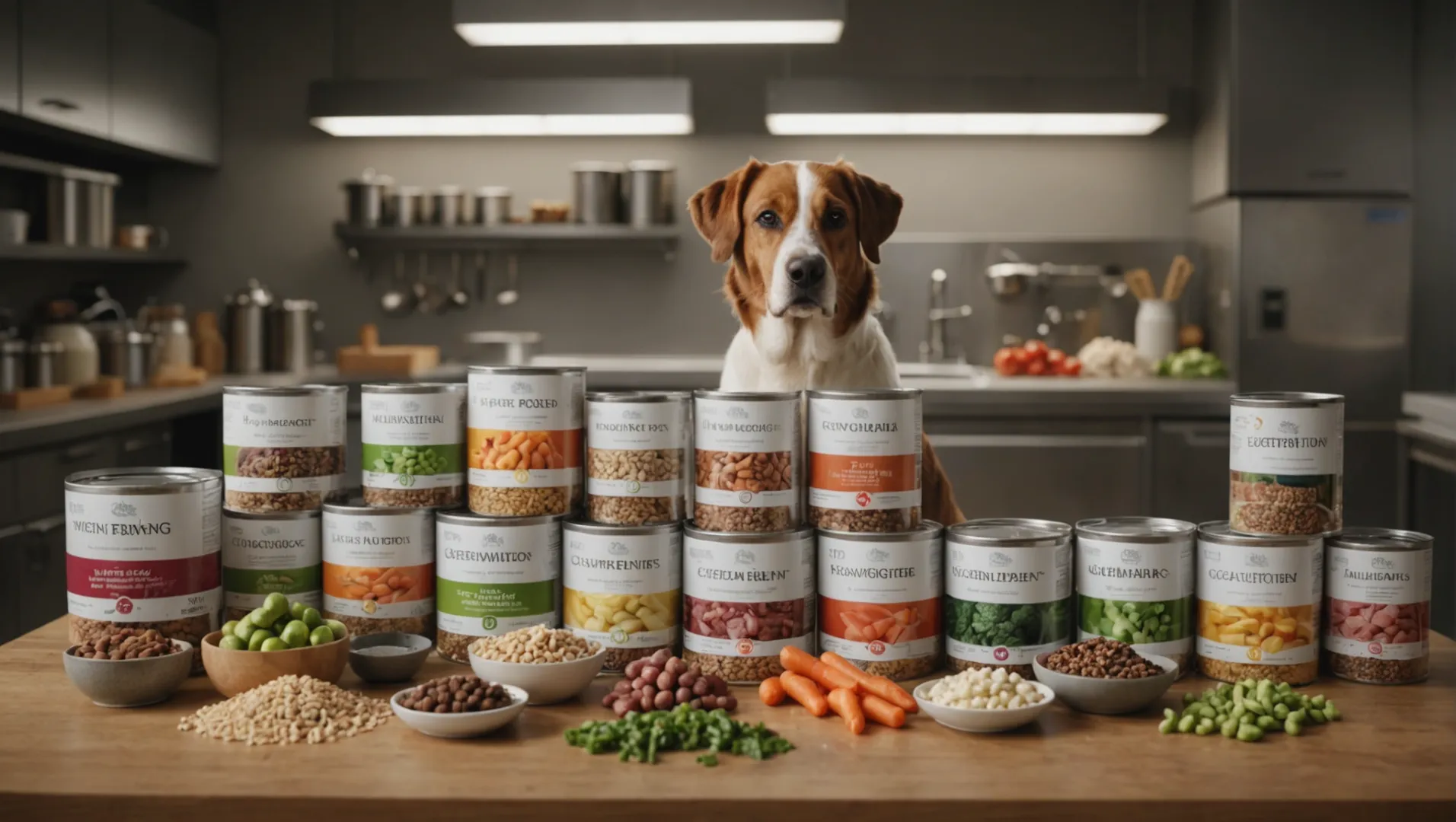
In today’s competitive pet food industry, manufacturers face the triple challenge of nutritional accuracy, production efficiency, and cost stability. Many newcomers believe that “formulation” simply means mixing meat, grain, and vitamins together. In reality, true pet food formulation is a scientific engineering process combining animal nutrition, ingredient chemistry, extrusion and canning technology, microbiological safety, and sensory design. The pain point for most producers is the gap between nutritional theory and factory practice—recipes that look ideal on paper may fail during extrusion, lose nutrients in drying, or separate in wet canning. The consequences can range from poor palatability to costly recalls.
The solution is a step-by-step formulation system that integrates nutritional science, functional ingredient mapping, process calibration, and cost optimization, supported by precision machinery. With Darin Machinery’s twin-screw extruders and wet food production systems, it is now possible to turn balanced formulations into stable, high-performing commercial products.
Pet food formulation is the integrated process of designing nutritionally complete and cost-effective recipes for pets of different species and life stages, by balancing macro- and micronutrients, optimizing ingredient functionality, and aligning with processing parameters for extrusion (dry food) and retorting (wet food). It requires scientific calculation of nutrient matrices, understanding of ingredient digestibility, control of processing variables, and compliance with global regulatory standards such as AAFCO (USA), FEDIAF (EU), and GB/T (China).
The deeper you understand formulation, the more you realize it connects every part of your operation—from R&D and procurement to mixing, extrusion, drying, coating, filling, sterilization, and packaging. Let’s explore, step by step, how professional manufacturers develop both dry and wet pet food formulations that meet market expectations and ensure animal health.
Pet food formulation is only about achieving crude protein and fat percentages.False
True formulation ensures balance of over 40 essential nutrients, ingredient interactions, and processing stability to deliver safe, palatable, and nutritionally complete products.
Step 1: Define Nutritional Requirements by Species, Life Stage, and Purpose
Pet food formulation always begins with defining nutritional targets—the precise nutrient levels required by the target animal. Dogs, cats, fish, birds, and small mammals all have distinct metabolic and digestive systems. Even within one species, age, activity, reproduction status, and health condition dramatically alter energy and nutrient needs.
| Species | Life Stage | Energy Requirement (kcal/kg BW^0.75/day) | Key Nutrient Focus | Moisture Level (Dry vs. Wet) |
|---|---|---|---|---|
| Dog | Puppy | 130 | Protein, Calcium, Phosphorus | 10% / 70% |
| Dog | Adult | 95 | Fat, Fiber, Energy balance | 10% / 70% |
| Cat | Kitten | 100 | Protein, Taurine, Vitamin A | 10% / 75% |
| Cat | Adult | 70 | Fat, Taurine, Omega-6:Omega-3 | 10% / 75% |
| Fish | Grower | Variable | Protein, Lipid, Digestible Energy | 8% / — |
| Bird | Maintenance | 80–120 | Protein, Calcium, Vitamin D | 10% / 60% |
Dry kibble typically delivers 8–12% moisture, while wet or canned pet food delivers 70–85%. These moisture levels directly affect energy density—so nutrient calculations must use dry matter basis (DMB) for accuracy.
For example:
If a dry dog food provides 25% protein at 10% moisture, and a canned dog food provides 10% protein at 75% moisture, their protein content on DMB becomes:
- Dry food: 25 ÷ (100–10) × 100 = 27.8%
- Wet food: 10 ÷ (100–75) × 100 = 40%
Thus, canned products are not necessarily “weaker”—their high moisture simply dilutes the nutrient percentage.
A professional formulator references AAFCO Dog and Cat Food Nutrient Profiles or FEDIAF Guidelines, adjusting targets for growth, reproduction, and maintenance. For special diets (weight control, renal, senior, hypoallergenic), veterinary recommendations or NRC data are used to fine-tune specific amino acids, minerals, and vitamins.
Step 2: Select High-Quality Ingredients and Understand Their Functional Roles
Every ingredient contributes not just nutrients but also texture, palatability, and processing behavior. Ingredient selection differs slightly between dry and wet pet food:
| Ingredient Type | Common Sources | Function | Application |
|---|---|---|---|
| Animal Proteins | Chicken meal, Fish meal, Poultry by-product, Fresh meat slurry | Structural protein, amino acid balance | Both dry and wet |
| Plant Proteins | Soy isolate, Corn gluten, Pea protein | Protein filler, structure control | Dry mainly |
| Carbohydrates | Corn, Rice, Sweet potato, Wheat | Energy source, extrusion expansion | Dry |
| Fats & Oils | Chicken fat, Fish oil, Tallow | Energy density, palatability | Both |
| Fiber | Beet pulp, Cellulose | Digestive health, texture | Both |
| Binders/Thickeners | Starch, Guar gum, Carrageenan | Product structure, gravy binding | Wet |
| Vitamins & Minerals | Premix powder | Nutrient completeness | Both |
| Additives | Flavor enhancers, Antioxidants, Preservatives | Shelf life, sensory quality | Both |
Dry formulations rely on ingredients that behave well during extrusion—meaning starch that gelatinizes and proteins that denature properly. Wet formulations require ingredients that can withstand thermal sterilization (121°C for 20–40 minutes) without nutrient or texture degradation.
Ingredient suppliers must provide Certificate of Analysis (COA) for each batch, verifying proximate composition: crude protein, fat, moisture, ash, and fiber. Modern factories integrate this into formulation software, so each lot automatically updates nutrient inputs.
Fish oil should not be used in dry food formulations because it clogs the extruder.False
Fish oil can be used effectively when applied post-extrusion during the vacuum coating stage to enhance omega-3 levels and palatability.
Step 3: Build the Nutrient Matrix and Balance Ratios
Once target nutrients and ingredients are defined, the next step is to create a nutrient matrix—a detailed spreadsheet or digital model showing how each ingredient contributes to the final nutrient composition. Software like Darin SmartFormulator™, Format International, or Brill helps balance cost and nutrient constraints simultaneously.
| Nutrient | Target (Adult Dog Dry Food, DMB) | Ingredient Contribution Example |
|---|---|---|
| Crude Protein | 25% | Chicken meal 45%, Corn gluten 60%, Rice 7% |
| Crude Fat | 12% | Poultry fat, Fish oil |
| Crude Fiber | 4% | Beet pulp, Cellulose |
| Moisture | ≤10% | Controlled by dryer |
| Calcium | 1.0% | Bone meal, premix |
| Phosphorus | 0.8% | Bone meal, protein meals |
| Taurine (Cats) | 0.15% | Synthetic or meat-based |
| Omega-6:Omega-3 | 5–10:1 | Poultry fat + fish oil balance |
Key balancing rules:
- Ca:P ratio ≈ 1.2–1.4:1
- Omega-6:Omega-3 between 5:1 and 10:1
- Protein:Energy ratio suitable to species
- Digestibility coefficient > 85%
For wet food, nutrient ratios must account for high moisture and thermal stability. Thickeners (e.g., cassava starch, guar gum) help maintain texture and prevent phase separation. Fat and protein oxidation are minimized with mixed tocopherols or rosemary extract.
Step 4: Adjust for Processing Effects – Extrusion (Dry) vs. Retorting (Wet)
This is where most formulations fail in practice. Nutrient values on paper can shift during processing due to heat, shear, moisture, and oxidation. Therefore, recipes must be adjusted for processing losses:
| Process | Typical Loss Factor | Nutrients Affected | Control Method |
|---|---|---|---|
| Extrusion (120–180°C, 20–60 sec) | 5–20% | Vitamins A, E, Lysine | Pre-overformulation, coating |
| Drying (90–130°C, 15–40 min) | 2–10% | Fat oxidation, color | Controlled airflow |
| Retorting (121°C, 30–45 min) | 10–30% | Vitamin B complex | Add heat-stable forms |
| Storage | Variable | Fat oxidation, aroma | Use antioxidants and barrier packaging |
Dry food: During extrusion, starch gelatinizes, proteins denature, and the kibble expands with steam flash-off. The inclusion of moisture (25–30%) and fat (≤12%) before extrusion determines density. Darin twin-screw extruders allow fine control of torque, temperature, and residence time to optimize expansion.
Wet food: In contrast, ingredients are mixed cold or mildly heated, filled into cans/pouches, and sealed. Sterilization (retorting) ensures microbial safety but can degrade heat-sensitive nutrients. Thus, vitamin premixes must include overages (typically 15–25%) to meet label claims after processing.
Step 5: Laboratory Testing, Palatability, and Digestibility Evaluation
Before scaling up production, laboratory validation ensures the formulation meets intended nutritional and sensory specifications. Key tests include:
| Parameter | Analytical Method | Acceptable Range |
|---|---|---|
| Moisture | Oven drying | 8–12% (dry) / 70–80% (wet) |
| Crude Protein | Kjeldahl or Dumas | As formulated |
| Crude Fat | Soxhlet extraction | ±1% of target |
| Crude Fiber | Enzymatic-gravimetric | ≤5% |
| Ash | Muffle furnace | ≤10% |
| Water activity (aw) | Hygrometer | <0.6 (dry) / <0.95 (wet) |
| Microbial load | Plate count | Negative for pathogens |
Palatability tests use two-pan or single-bowl methods on animals, tracking first choice and consumption ratio. A minimum of 70% preference is considered good. Digestibility is tested via fecal collection and analysis, targeting >80% dry matter digestibility.
High-protein diets always increase digestibility.False
Digestibility depends on ingredient quality and processing, not just protein percentage. Overly high protein can reduce palatability or cause stool odor.
Step 6: Optimize for Cost Efficiency and Ingredient Supply Stability
Even the best formulation must remain profitable. Ingredient markets fluctuate seasonally; thus, cost-optimized formulation uses least-cost linear programming (LCLP) while maintaining nutrition constraints.
| Ingredient | Current Price (USD/kg) | Alternative | Cost Impact | Nutritional Change |
|---|---|---|---|---|
| Chicken meal | 1.40 | Poultry by-product meal | ↓ 12% | Slightly lower digestibility |
| Fish oil | 3.00 | Poultry fat + DHA algal oil | ↓ 10% | Requires antioxidant |
| Corn | 0.40 | Rice bran + cassava | Neutral | Adjust fiber |
| Guar gum (wet) | 2.80 | Cassia gum | ↓ 8% | Similar viscosity |
Automation can update formulas in real-time using market price feeds. Darin SmartFormulator™ integrates cost tracking and supplier database management, ensuring raw material substitutions don’t break the nutrient matrix.
At this stage, the formulation is lab-proven, nutritionally balanced, process-compatible, and cost-optimized, ready for industrial-scale trials.
Step 7: Scale Up the Formulation to Industrial Production
Once your laboratory-scale formula is validated nutritionally and sensorially, the next major task is industrial scaling. Scaling is not merely multiplying ingredient weights; it involves recalibrating for mechanical flow, shear, residence time, and process kinetics across extrusion, drying, coating, canning, and retorting systems.
In dry food, the formulation passes through several stages on Darin’s fully automated extrusion line:
- Raw material grinding and dosing – Using precision screw feeders to ensure uniform particle size (0.2–0.8 mm).
- Mixing and conditioning – Steam and water are injected to reach 25–30% moisture, promoting gelatinization.
- Extrusion – Twin-screw extruders adjust temperature (120–180 °C) and pressure (2–5 MPa). The mechanical energy input defines product expansion, texture, and density.
- Drying and cooling – Multi-layer dryers reduce moisture to 8–10% and stabilize the kibble.
- Vacuum coating – Oils, palatants, and vitamin solutions are applied uniformly under vacuum, ensuring nutrient retention.
- Packaging – Nitrogen flushing minimizes oxidation.
In wet food, scaling introduces the complexity of batch control and sterilization:
- Batch mixing – Fresh/frozen meats, vegetables, and premixes are combined in a jacketed mixer at 40–60 °C.
- Grinding and emulsifying – Achieves uniform particle distribution and texture.
- Filling – Automated fillers portion slurry into cans or pouches.
- Sealing – Vacuum-sealed to exclude air and oxygen.
- Retorting – Thermal sterilization at 121 °C for 20–40 min under controlled F₀ values.
- Cooling and storage – Rapid cooling prevents overcooking and maintains texture.
| Parameter | Dry Extruded Food | Wet Canned Food |
|---|---|---|
| Target Moisture | 8–12% | 70–80% |
| Processing Temp | 120–180 °C | 115–125 °C |
| Energy Density (kcal/kg) | 3,500–4,000 | 800–1,200 |
| Shelf Life | 12–18 months | 24–36 months |
| Key Critical Control Points (CCPs) | Extruder temp, dryer moisture, coating fat level | Retort temp/time, seal integrity, sterility |
Scaling should always include pilot trials on Darin’s lab extruder or retort units before full-scale production. This allows fine adjustment of feed rate, torque, and retention times to ensure that the industrial output matches lab nutritional and physical targets.
Scaling up a pet food formulation only requires multiplying ingredient quantities by batch size.False
Industrial scaling must account for process kinetics, shear forces, heat transfer, and moisture control; simple multiplication often causes textural and nutritional deviations.
Step 8: Implement Quality Control and Nutrient Assurance
Quality assurance (QA) and quality control (QC) safeguard the consistency of every production batch. Industrial pet food manufacturing operates under HACCP (Hazard Analysis Critical Control Point) and ISO 22000 frameworks. A comprehensive QA/QC program covers:
- Incoming raw materials – Check moisture, contamination, and COA conformity.
- In-process monitoring – Verify moisture, extrusion pressure, and temperature.
- Finished product testing – Confirm nutrient content, microbial safety, texture, and packaging integrity.
- Shelf-life evaluation – Accelerated storage tests under 37 °C and 60% RH for 6–8 weeks.
| QC Parameter | Analytical Tool | Standard/Target |
|---|---|---|
| Moisture | Moisture balance | 8–12% (dry) / 70–80% (wet) |
| Protein | Kjeldahl/Dumas | ±0.5% of formula target |
| Fat | Soxhlet | ±0.5% of formula target |
| Ash | Muffle furnace | <10% |
| Microbial load | Plate count | Negative for pathogens |
| Water Activity (aw) | Hygrometer | <0.6 (dry) / <0.95 (wet) |
| Oxygen level (pack) | O₂ meter | <1% |
Fat oxidation is a major risk, particularly in high-fat kibbles and gravy-based wet food. Use antioxidants such as mixed tocopherols (E306) and rosemary extract, and perform periodic Peroxide Value (PV) and TBARS tests.
Darin’s automated lines can integrate in-line sensors that continuously monitor extrusion temperature, torque, and moisture, sending data to a central PLC. Deviations trigger alarms or automatic adjustments, ensuring real-time process control.
Preservatives are unnecessary in wet canned food because sterilization alone prevents spoilage.False
Although sterilization kills microorganisms, fat oxidation and vitamin degradation still occur; antioxidants and chelating agents are often required to maintain shelf stability.
Step 9: Ensure Regulatory Compliance and Accurate Labeling
Regulatory frameworks vary by region but share the same objective: nutritional adequacy, ingredient transparency, and consumer protection. Major standards include:
| Region | Regulatory Body | Key Requirements |
|---|---|---|
| USA | AAFCO + FDA | Nutrient profiles, guaranteed analysis, ingredient declaration |
| EU | FEDIAF | Nutritional tables, additive limits, labeling languages |
| China | GB/T 31216–2014 | Nutrient limits, hygiene, additive management |
| Japan | MAFF | Pet Food Safety Law compliance |
| Australia/NZ | PFIAA | Ingredient and additive safety verification |
A compliant label must include:
- Product name and intended species/life stage
- Ingredient list (descending order by weight)
- Guaranteed analysis (protein, fat, fiber, moisture, ash)
- Feeding directions
- Manufacturer name and contact
- Batch number and best-before date
Dry and wet products must declare nutrients on an “as-fed” basis, but many professionals include Dry Matter Basis (DMB) values for transparency.
Mislabeling (e.g., “grain-free” when using rice protein concentrate) can lead to regulatory fines and recalls.
Darin Machinery assists clients with compliance consulting—providing references for AAFCO or FEDIAF nutrient tables and formula-to-label conversion templates within the SmartFormulator™ system.
Step 10: Integrate Traceability and Data Management
Modern consumers demand transparency. Therefore, traceability is no longer optional—it’s a core quality pillar. A digital traceability system logs every batch of raw materials, processing conditions, QC results, and packaging data.
| Traceability Level | Example | Function |
|---|---|---|
| Ingredient trace | Chicken meal batch #CH-2401 | Links nutrient deviation to supplier |
| Process trace | Extrusion run #E-1589 | Associates processing conditions with quality |
| Product trace | Finished lot #P-2307 | Enables recall within 2 hours |
| Customer trace | Distributor ID + region | Provides after-sale feedback |
Darin’s production lines integrate barcode/RFID systems and PLC–ERP linkage, automatically recording formulation data and batch performance. If a nutritional deviation or packaging issue occurs, traceability enables immediate corrective action.
For export markets, data must comply with GS1, ISO 22005, or local traceability standards. A strong traceability framework also facilitates certifications (BRC, IFS) and builds trust with global partners.
Traceability is only necessary for export manufacturers.False
Domestic regulations and customer expectations increasingly demand full traceability for all pet food producers to ensure safety and recall readiness.
Step 11: Incorporate Sustainability and Functional Nutrition Trends
Formulation today extends beyond basic nutrition. The new frontier combines sustainability, functional ingredients, and health claims. Consumers are driving demand for environmentally conscious and biologically supportive diets.
Key Sustainability Trends
- Alternative Proteins: Insect meal, single-cell proteins, or fermented yeast reduce carbon footprint.
- Upcycled Ingredients: Utilizing brewery by-products or fish trimmings minimizes waste.
- Energy Efficiency: Low-temperature drying, waste-heat recovery, and solar-assisted systems.
- Eco-Packaging: Biodegradable or recyclable multilayer films with oxygen barriers.
Functional Nutrition Directions
| Function | Ingredient Examples | Benefit |
|---|---|---|
| Digestive health | Prebiotics (FOS, MOS), probiotics | Gut flora balance |
| Joint health | Glucosamine, Chondroitin | Mobility support |
| Skin & coat | Omega-3, Zinc, Biotin | Dermatological health |
| Cognitive support | DHA, L-Carnitine | Brain development |
| Low-allergen | Hydrolyzed protein, novel meat (duck, insect) | Reduced sensitivity |
Dry and wet formulations can integrate these functional additives, but placement differs:
- Dry food: Add post-extrusion via coating to preserve heat-sensitive compounds.
- Wet food: Incorporate before filling with validated overage to compensate for retort loss.
Functional additives can be added at any point in the process without affecting stability.False
The timing and form of addition are critical; heat-labile ingredients must be added post-extrusion or pre-retort using encapsulated or stabilized variants.
Step 12: Validate, Document, and Continuously Improve the Formulation
Before commercial release, finalize your Formulation Dossier—a comprehensive document that ensures traceability, repeatability, and compliance. It includes:
- Nutrient specification sheets with formulation tolerance limits.
- Raw material COAs and supplier certifications.
- Process flow diagrams (extrusion/canning line parameters).
- QC and microbiological test results.
- Label proofs and regulatory approval.
- Batch records and statistical process control (SPC) charts.
Use continuous improvement cycles (PDCA or Six Sigma DMAIC) to update formulations based on:
- New raw material sources.
- Market feedback and palatability data.
- Nutrient bioavailability studies.
- Cost and sustainability optimization.
AI-driven tools like Darin SmartFormulator™ automatically analyze production data to highlight nutrient drift, cost deviations, and process bottlenecks—providing data-backed suggestions for recipe refinement.
Summary: From Formula Concept to Market Success
Pet food formulation is both science and art—a balance between nutritional design and engineering precision. Whether dry kibble or wet canned, success depends on integrating:
- Scientific nutrient planning based on species and life stage.
- Functional ingredient selection and digestibility optimization.
- Processing calibration to preserve nutrients.
- Analytical validation and QC assurance.
- Cost, compliance, and sustainability management.
With the right formulation process and reliable production line, you can deliver consistent, nutritious, and market-winning pet foods worldwide.
Let’s Formulate Success Together — Contact Darin Machinery
As a professional manufacturer specializing in pet food extrusion and wet food processing lines, Darin Machinery provides turnkey solutions for your R&D, pilot trials, and full-scale production. Our engineers and nutrition experts work hand in hand to ensure your formulations perform flawlessly from concept to shelf.
📞 Contact Darin Machinery Today
🌐 www.petreatsmachine.com
📧 darin4@darin.cn
📱 WhatsApp: +86 156 5000 7983
Let’s turn your pet food formula into a globally trusted brand — scientifically designed, precisely manufactured, and proudly made with Darin Machinery.


